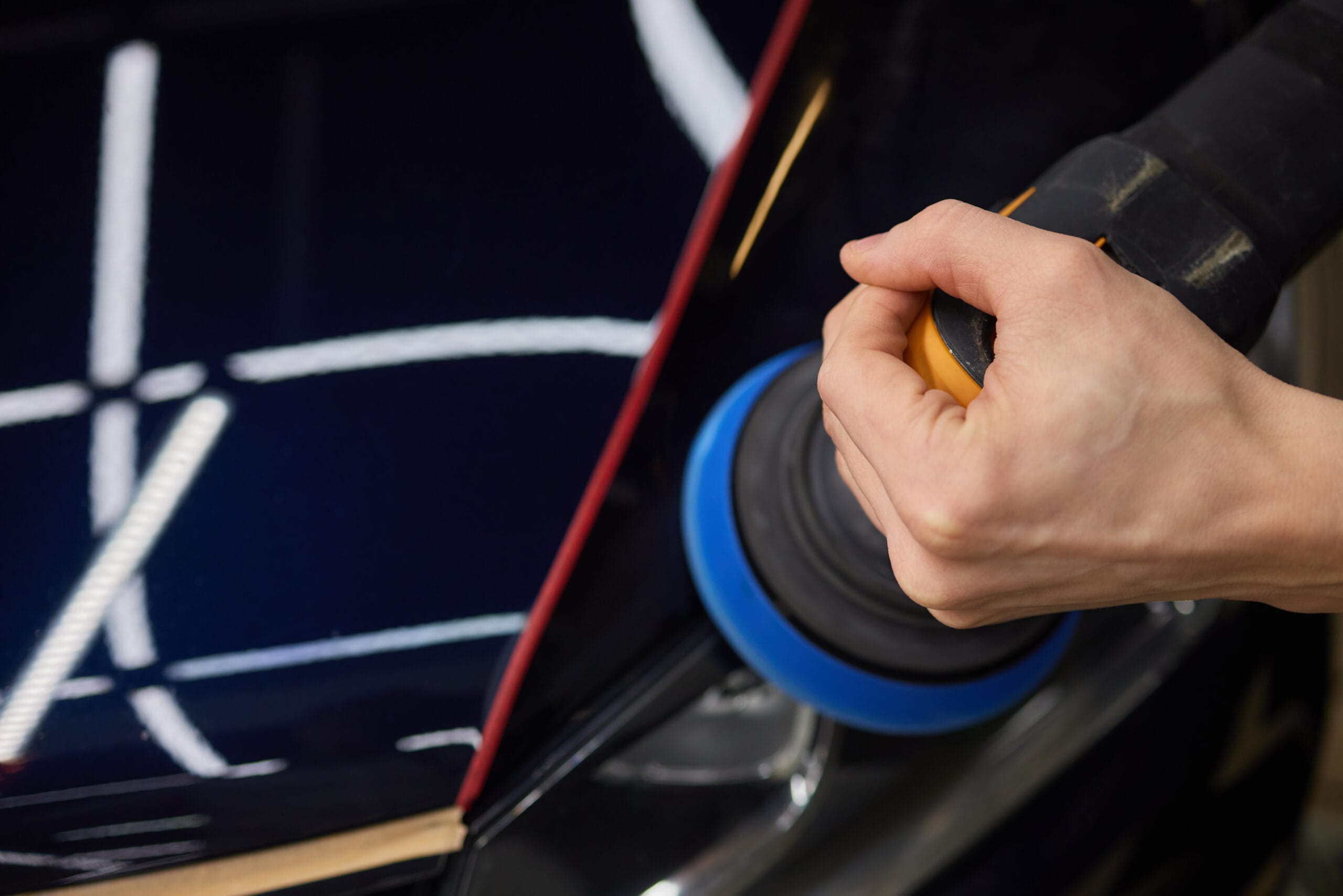Every car owner in India knows how difficult it is to maintain a vehicle’s showroom-like shine. From scorching summers to heavy monsoons, dusty city roads to rural highways filled with gravel—Indian conditions are harsh on car paint. That’s why more and more people are turning to advanced paint protection solutions like Ceramic Coating and Graphene Coating.
But which one should you choose for your car? Ceramic coating vs. graphene coating – which is better for Indian cars? Let’s dive into a detailed comparison.
What is Ceramic Coating?
Ceramic coating is a liquid polymer, primarily made of silica dioxide (SiO₂), that bonds chemically with your car’s paint. Once applied and cured, it forms a hard, transparent layer over the paint surface.
Key Features of Ceramic Coating:
- Durability: Lasts 2–5 years depending on maintenance.
- Hydrophobic effect: Repels water and makes cleaning easy.
- UV protection: Prevents fading and oxidation.
- Glossy finish: Enhances paint depth and shine.
- Scratch resistance: Protects against swirl marks and minor scratches.
Ceramic coating has been the go-to solution for many Indian car owners because it balances cost, effectiveness, and longevity.
What is Graphene Coating?
Graphene coating is a newer, more advanced technology derived from graphene molecules—a single layer of carbon atoms arranged in a honeycomb lattice. When used in car coatings, graphene enhances the properties of ceramic coating by making it stronger, smoother, and more heat-resistant.
Key Features of Graphene Coating:
- Durability: Lasts 5–7 years, sometimes even longer.
- Anti-static properties: Reduces dust attraction compared to ceramic coatings.
- Superior hydrophobicity: Water beads and sheets off effortlessly.
- Heat resistance: Prevents water spots and etching under strong Indian sunlight.
- Smoother finish: Provides a deeper, slicker shine than ceramic coatings.
Graphene coating is considered an upgrade to ceramic coating, but it also comes at a higher cost.
Ceramic Coating vs. Graphene Coating – Key Differences
| Feature | Ceramic Coating | Graphene Coating |
|---|---|---|
| Durability | 2–5 years | 5–7 years |
| Hydrophobic Effect | Strong | Stronger, with less water spotting |
| Gloss & Finish | Glossy and reflective | Deeper, slicker, mirror-like shine |
| Heat Resistance | Moderate | Excellent (better for hot Indian summers) |
| Scratch Resistance | Protects from minor scratches | Slightly better due to a stronger bond |
| Dust Attraction | Attracts dust more easily | Anti-static, attracts less dust |
| Cost | ₹25,000 – ₹50,000 | ₹40,000 – ₹80,000 |
| Ease of Application | Common, widely available | Newer, fewer professionals offer it |
| Best For | Daily-use cars on a budget | Premium cars or long-term paint protection seekers |
Advantages of Ceramic Coating
- Affordable Protection: More budget-friendly than graphene.
- Enhanced Shine: Gives your car a glossy, showroom-like look.
- Proven Technology: Well-established in India with many trained applicators.
- Low Maintenance: Reduces the need for frequent waxing or polishing.
- Good Balance: Provides solid protection for daily drivers without breaking the bank.
Advantages of Graphene Coating
- Longer Lifespan: Lasts nearly twice as long as ceramic coating.
- Better Heat Resistance: Perfect for Indian summers where paint damage is common.
- Reduced Water Spots: Prevents etching caused by hard water.
- Superior Hydrophobic Properties: Water and mud slide off more easily.
- Dust Resistance: Anti-static nature means less frequent cleaning.
Disadvantages of Ceramic Coating
- Needs reapplication after 2–5 years.
- Attracts dust faster than graphene.
- Prone to water spotting in areas with hard water supply.
Disadvantages of Graphene Coating
- Higher initial cost.
- Limited availability in smaller cities and towns.
- Fewer trained professionals compared to ceramic coating.
Which Coating is Better for Indian Cars?
India’s climate is diverse—scorching heat in the north, salty coastal air in the west and south, and monsoon rains across the country. Both coatings work well, but your choice should depend on your car type, budget, and usage.
Choose Ceramic Coating if:
- You own a mid-range car and want budget-friendly protection.
- You live in areas with moderate weather and regular maintenance facilities.
- You prefer a glossy finish but don’t want to spend too much.
Choose Graphene Coating if:
- You own a premium or luxury car (BMW, Audi, Mercedes, Lexus).
- You live in cities with harsh climates (Delhi summers, Mumbai monsoons).
- You want long-lasting protection without frequent reapplications.
- You deal with hard water and want to avoid water spots.
Cost Comparison in India
- Ceramic Coating: ₹25,000 – ₹50,000 for full-body application.
- Graphene Coating: ₹40,000 – ₹80,000 for full-body application.
Though graphene is costlier upfront, it lasts almost twice as long. Over 6–7 years, graphene may actually turn out more economical than reapplying ceramic coating twice.
Maintenance Tips for Both Coatings
- Wash with pH-neutral car shampoo.
- Avoid automatic car washes with harsh brushes.
- Use microfiber towels for drying.
- Apply maintenance sprays every 6–12 months for maximum shine.
- Park in shaded areas when possible.
Conclusion :
In the battle of ceramic coating vs. graphene coating, both options offer excellent protection for Indian cars.
- Ceramic coating is ideal if you’re looking for a cost-effective, proven solution that enhances gloss and provides decent protection.
- Graphene coating is the better choice if you want long-term durability, stronger protection, and resistance to India’s extreme weather conditions.
If budget allows, graphene coating is the future of paint protection in India. But for most car owners, ceramic coating still delivers great value for money.

